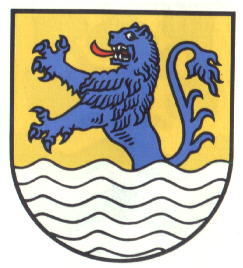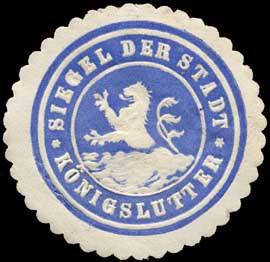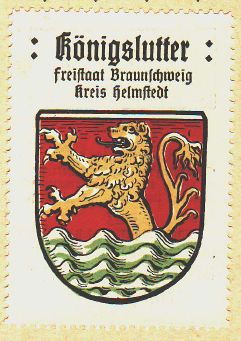Königslutter am Elm: Difference between revisions
Knorrepoes (talk | contribs) m (Text replacement - "{{de}}" to "") |
Knorrepoes (talk | contribs) m (Text replacement - "{| class="wikitable"↵|+Official blazon↵|-↵|'''German'''↵| ↵|-↵|'''English''' ↵| {{blazon wanted}}↵|}" to "{| class="wikitable" |+Official blazon |- |'''German''' | blazon wanted |- |'''English''' | blazon wanted |}") |
||
| Line 13: | Line 13: | ||
|- | |- | ||
|'''German''' | |'''German''' | ||
| | | blazon wanted | ||
|- | |- | ||
|'''English''' | |'''English''' | ||
| | | blazon wanted | ||
|} | |} | ||
Revision as of 08:08, 6 April 2023
KÖNIGSLUTTER / KÖNIGSLUTTER AM ELM
State : Niedersachsen
District (Kreis) : Helmstedt
Additions : 1974 Beienrode, Boimstorf, Bornum am Elm, Glentorf, Gross Steinum, Klein Stemke, Lauingen, Lelm, Ochsendorf, Rhode, Rieseberg, Rotenkamp, Rottorf, Scheppau, Schickelsheim, Sunstedt, Uhry
| German | blazon wanted |
| English | blazon wanted |
Origin/meaning
Königslutter received city rights around 1405. The oldest seal probably dates from the same time, but the oldest known copy dates from 1470. The lion is the lion of the Welfen dynasty, as the city was a possession of the Dukes of Braunschweig-Lüneburg from this dynasty. The waves symbolise the Lutter stream in the municipality.
In the 17th and 18th century the lion was not seen as rising from the waves, but as walking above the waves. The colour was first shown in the 19th century as a red lion in silver, but the city colours were considered silver and blue. The present arms were granted in 1901 and are based on the oldest seal and in the historical city colours.
| Seal from around 1900 |
The arms by Hupp in the Kaffee Hag albums +/- 1925 |
Literature: Stadler, 1964-1971, 8 volumes.


